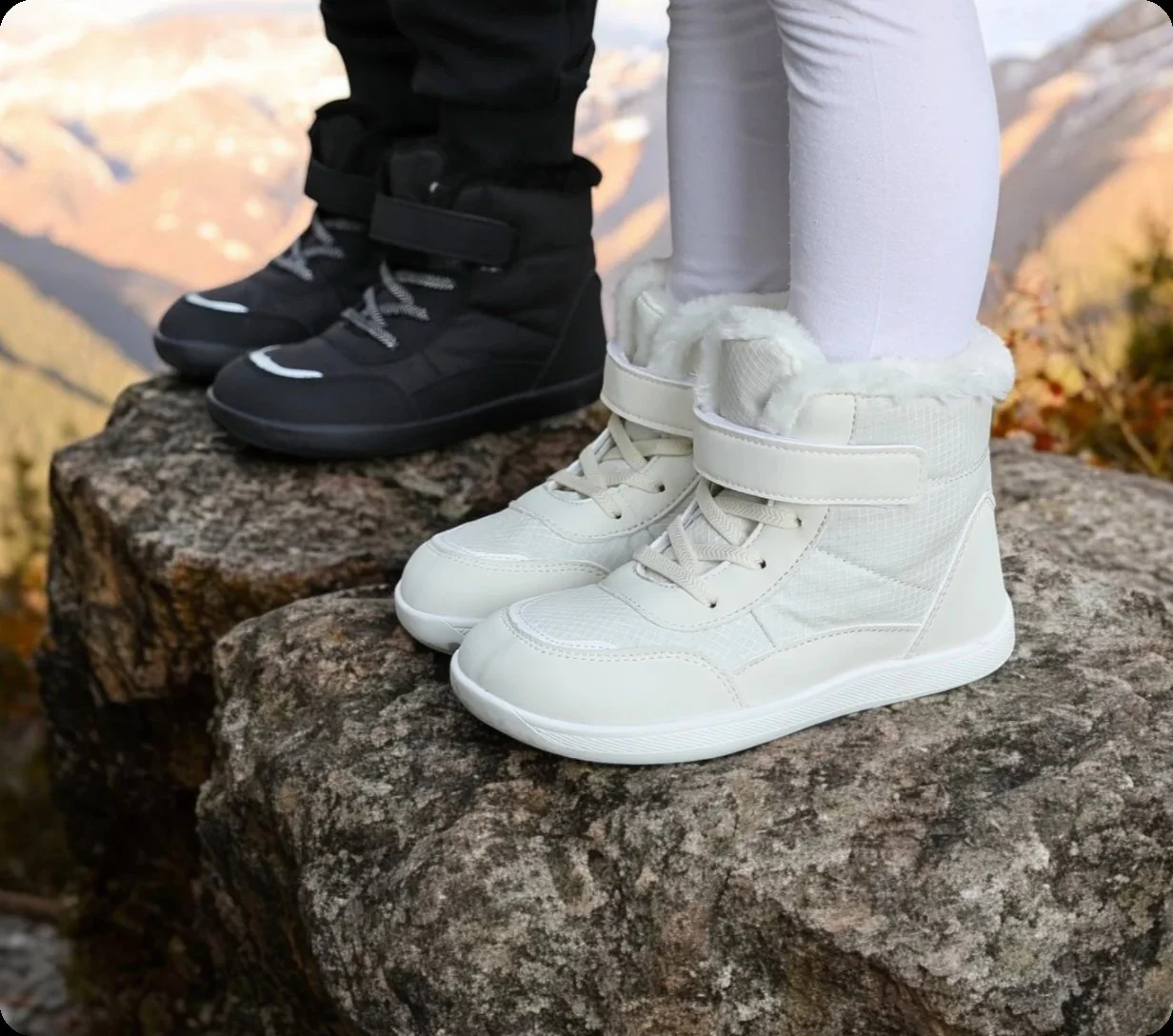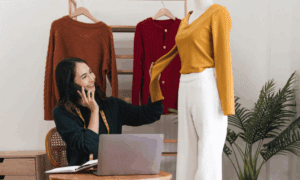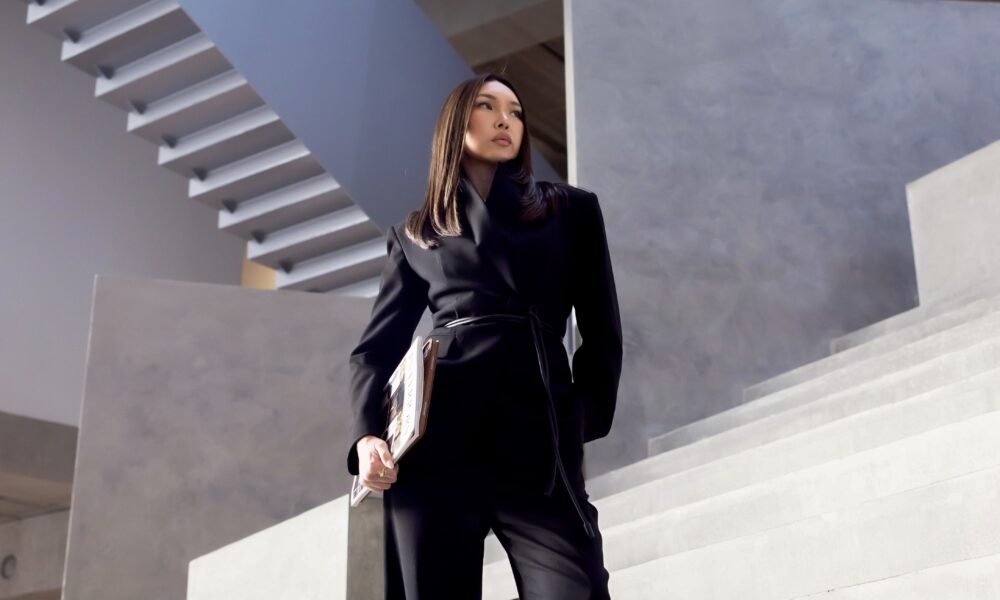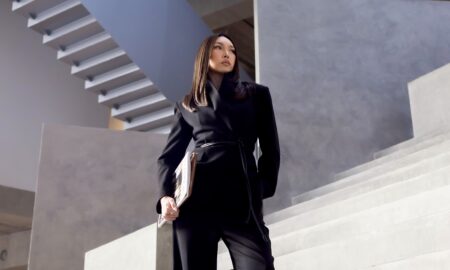When it comes to supporting a child’s healthy growth, parents often focus on nutrition, education and exercise – but rarely on the shoes their children wear. Yet, the development of the feet plays a crucial role in balance, posture and overall movement.
Barefoot shoes are designed to mimic the natural state of walking without footwear, allowing the feet to move freely and develop strength. For children, whose bones and muscles are still forming, this freedom of movement can make a lasting difference.
The Problem with Conventional Children’s Shoes
Traditional children’s shoes are often heavily padded, with rigid soles and raised heels. While they may look supportive, they can actually limit natural movement and interfere with the way children’s feet grow.
Overly structured shoes:
- Restrict toe splay, preventing the toes from spreading naturally
- Reduce sensory feedback from the ground, which affects balance
- Encourage heel striking, changing natural gait patterns
- Weaken foot muscles by providing too much artificial support
In the long run, these factors may contribute to poor posture, clumsy movement and even discomfort as the child grows.
How Barefoot Shoes Support Natural Development
The philosophy behind barefoot shoes is simple: let the feet do what they are designed to do. Their thin, flexible soles and wide toe boxes allow children’s feet to function naturally.
Here’s how barefoot shoes help promote healthy foot development:
- Stronger muscles and ligaments – Without excessive support, the feet strengthen naturally.
- Improved balance and coordination – Feeling the ground improves proprioception and stability.
- Natural gait formation – Children learn to walk and run with proper biomechanics.
- Better posture – A flat sole encourages proper spinal alignment.
These benefits don’t just support physical health – they also encourage confidence and freedom of movement during play.
The Importance of Sensory Feedback
Children learn about their environment through touch, and the feet are full of sensory nerves. Traditional shoes block much of this feedback, dulling a child’s sense of movement and space.
Barefoot shoes enhance sensory awareness, helping children adapt more quickly to changes in surface or terrain. This not only improves balance but also strengthens their mind-body connection, an essential aspect of motor skill development.
Encouraging Healthy Habits Early
Just like healthy eating or regular exercise, natural movement habits are best established early. When children grow up wearing shoes that allow natural motion, they are less likely to develop problems such as flat feet, poor posture or muscle imbalance later in life.
Parents who introduce barefoot shoes during childhood give their kids the opportunity to build a solid physical foundation – one that supports active, healthy living well into adulthood.
A Note on Transition
If your child is used to wearing traditional shoes, a slow transition to barefoot footwear is best. Start with short periods of wear – around the house or during playtime – and gradually extend the duration.
Children usually adapt faster than adults, but monitoring comfort and foot health during the switch is always recommended.
Choosing the Right Barefoot Shoes
When selecting barefoot shoes for your child, consider the following features:
- Wide toe box to allow natural toe movement
- Zero-drop sole for balanced posture
- Lightweight and flexible construction
- Breathable, non-toxic materials
- Easy fastening for independence and comfort
These qualities ensure your child’s shoes provide both protection and the freedom necessary for natural development.
Beyond Physical Benefits
Wearing barefoot shoes also encourages mindfulness and connection. As children become aware of how their feet interact with the ground, they develop greater attention to balance, movement and their surroundings. This awareness fosters confidence and independence – qualities that extend far beyond physical health.
There are also collections like Barefoot Shoes Kids, designed specifically with children’s anatomy and movement patterns in mind. These models combine flexibility, durability and comfort for every stage of growth.
Conclusion
Children’s feet are not miniature versions of adult feet – they are growing structures that need room to move and strengthen. Traditional shoes may hinder this process, while barefoot shoes promote natural, healthy development.
By encouraging children to move freely and feel the ground beneath their feet, parents can help them build strength, balance and confidence from the ground up.
Switching to barefoot shoes is a small step with a big impact – one that supports your child’s natural potential for a lifetime of healthy movement.





























